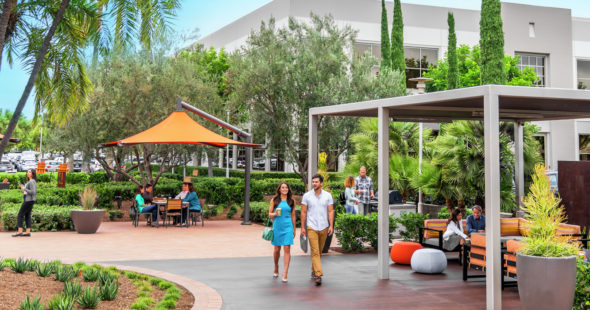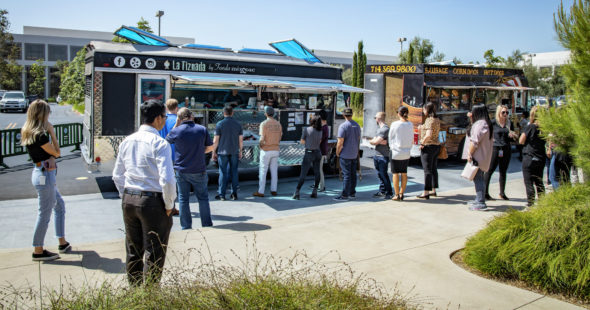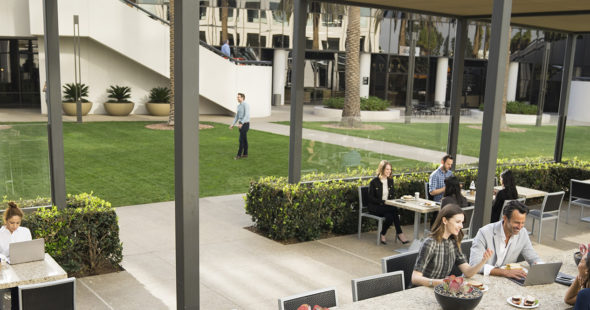As technology advances have untethered employees from their desks, companies are left grappling with a fundamental question: What is the role of the workplace in the age of remote work?
A decade into the remote work revolution, 70% of full-time employees work remotely at least one day per week, according to a 2018 research study from Switzerland-based serviced office provider IWG. Some full-time employees are skipping the office altogether: The study found that more than half (53%) work remotely for at least half of the workweek. As of July 2018, 40% more U.S. employers offered flexible workplace options than five years ago, and that figure is expected to increase.
A narrow focus on the rise of remote work, however, misses the bigger shift occurring in today’s workplace. The workplace is evolving from a transactional and utilitarian space to an experiential and participatory environment. Today’s technology means that teams, departments and entire companies can operate remotely. But even the best video conferencing system can’t replace what the right workplace provides: a dynamic environment for innovation, engagement and social currency.
Understanding what makes an experiential workplace effective is key to harnessing its benefits–and creating a workplace where employees who don’t have to be there still choose to be there.
Reinforcing Company Mission and Values
Millennials and Gen Z are keenly motivated by their employer’s vision and values. They need to know that their work is purposeful. When employees work remotely, however, a company loses the in-person interactions that are critical for reinforcing purpose and culture. So what gets employees back in the door?
“The workplace needs to be a fun, inspiring environment that motivates employees in a way that a coffee shop doesn’t,” says HR consultant Valerie Grubb. “The right workplace will get employees excited about coming into the office.”
Creating Space Where People Genuinely Feel Good
Consider co-working spaces: The freelancers in these spaces could choose to be anywhere. They’ve picked a co-working space not only because it meets essential utilitarian needs (a desk, reliable Internet) but also because the experience of being in this space is distinctly enjoyable.
To create a space where people want to be, think beyond an amenities checklist and consider how the space makes your employees feel.
“How people feel about a workspace is as important as the space itself,” says Irvine Company Office VP Design John Koga. “That’s because the workplace is seen as a reflection of the self. We call this ‘place identity.’ When place identity is high, employees report more engagement and enthusiasm in their work, more communication with their colleagues, and a stronger connection with their employer. They want to be in the workplace.”
Building Social Currency and Creating Opportunities for Innovation
In addition to reinforcing company mission and culture, social interaction is a significant part of the modern workplace’s value. Building social ties with co-workers enhances the effectiveness of teams and leads to greater retention while combating the productivity killer that is the loneliness epidemic.
The broader workplace, particularly when there are inviting outdoor common areas, can also generate the casual collisionswith people outside of one’s department or company that drive innovation. Even when employees are taking a break, chances of a success-driving “a-ha” moment rises. Given the solid science behind these serendipitous connections, it’s no surprise that companies like Yahoo and IBM are restricting or eliminating their work-from-home policies.
“These companies are really struggling to compete at an innovation level with smaller-stage organizations,” said Thanh Nguyen, managing director of HR consulting firm Connery Consulting to NBC News. “They’re thinking of every single possible way to reunite people to drive better innovations.”





